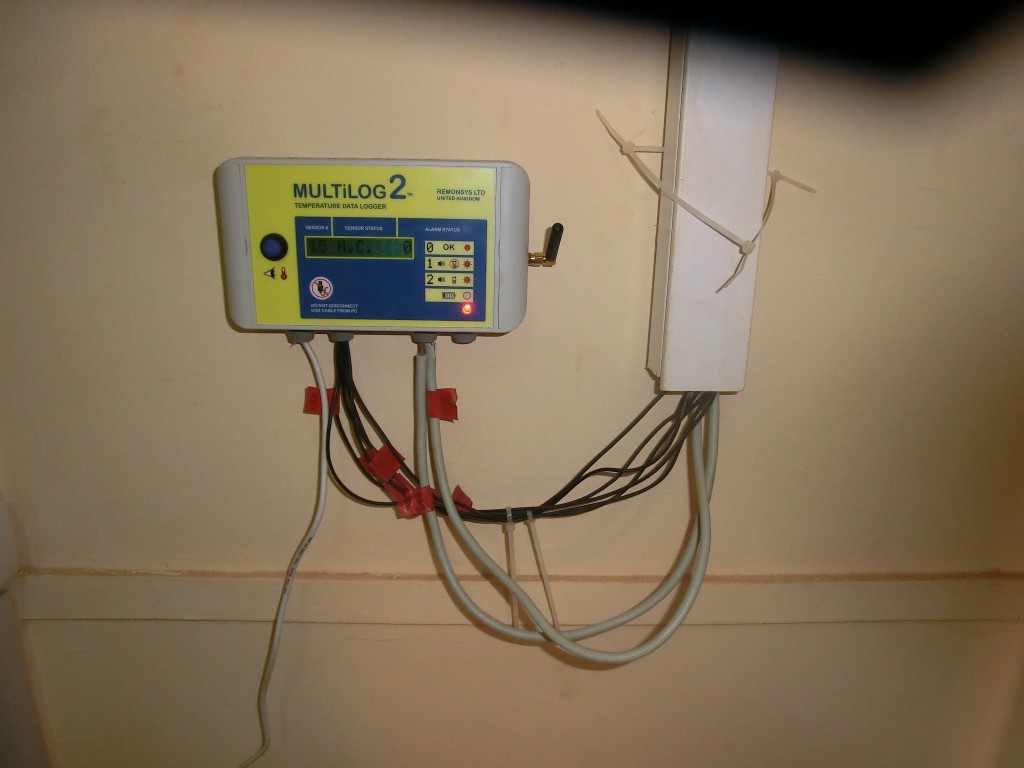Procurement and delivery of RTMDs can take many months but if RTMD is procured in connection with a new Walk-in Cold Room (WICR) installation, it is important to make sure that the WICR is fully installed and decommissioned before the RTM equipment is installed. If RTM equipment is received before, appropriate storage must be guarantied to avoid theft or damage to the RTMD.
Technical installation
Most suppliers provide installation support from their own certified technicians but these technicians might not be able to speak the local language. This deprives the technical installation specialist of the opportunity to train the local technicians who will eventually be in charge of maintaining the system. When a third-party technician is hired to install the equipment, it is important to ensure that the supplier can provide immediate and continuous support to cover all time zones (24/7), in case of challenges due to glitches in the installation of the product. This should be specified in the procurement agreement/contract.
An outlined good practice is to request responsible staff on site to provide in advance the necessary information regarding the site configuration: buildings, materials, cold chain equipment and available power outlets. This helps the installation team verify that they have all the necessary material and equipment and a good understanding of the site prior to the installation. It saves time during the installation and helps make sure that the installation team has all the necessary material (e.g. sufficient cabling). An example of this pre-installation storage facility questionnaire can be found in the related resources.

Photo: multilog installation, Burkina Faso, Denis Karaga
For multiple RTM installations for smaller storage, a pre-defined installation kit, can ease the process in particular if several teams of technicians are doing the installation to make sure that the installation person or team has all the necessary equipment. Even standard tools as screwdrivers might not be available on-site.
The table below shows an example of installation kit from a pilot project in Kenya
|
Example of installation kit for RTM installation at Health facility level:
|
It is critical for an effective use of RTMD to have a clear understanding of where the data is coming from. Therefore, during the installation, technicians must record the details of the cold chain equipment being monitored, how devices and sensors have been located and keep records of all installation parameters. Details of the placement and identification of the sensors must be recorded in a sensor map. Ownership and archiving of these records will be passed to the EPI programme. A few tools are provided in the related resources below for this purpose. Some of the tools can be used to maintain, not only technical but organizational information. Many of the RTM products contain bespoke software incorporating this record-keeping feature but it is also advisable to keep it in a simple Excel file as per the template suggested (Rollout tool) in the resources at the bottom of this page.
Installation validation
Proper signaling by all sensors at the programmed intervals (around every 5-10 minutes) should be verified.
Rules for the alarms need to be set up using WHO recommendations as guidelines. The standard from 30DTR alarms (i.e. low alarm set to -0,5°C or lower for 60 minutes and high alarm set to +8°C or higher for 10 hours) can be used but the threshold can be slightly adjusted. How long the equipment should be outside the recommended temperature range before an SMS is sent depends on local geographic and organizational factors (e.g. whether there is staff on site able to do the first basic checks on the equipment and take basic corrective action outside of working hours and whether this staff has access to a mobile phone to escalate if necessary). One should bear in mind that the cost of SMS communication increases with the number of SMS alarms. Alerts are customizable so that countries can configure their systems based on their specific parameters and can modify them if needed after testing and evaluation.
User accounts and escalation trees must be checked one last time and programmed, i.e. who needs to receive alarms and when and who needs to access the portal. This includes both primary respondents at the site, and the supervisors/managers who provide higher-level support and oversight.
A thorough temperature mapping exercise should be performed to define the most suitable position of the sensors if it was not recently performed as part of the installation of the cold rooms or freezer rooms.
Related resources
| Titre | Auteur | Année | Type | Langue |
|---|---|---|---|---|
| Berlinger Storage Facility Questionnaire | Berlinger & Co. AG | 2014 | User guide | Anglais |
| Sensor map MultiLog | Tool | Anglais |
This simple Excel tool can be used to provide the necessary documentation of RTM installation parameters.This document is not included yet, pending updates.
Link: URL
